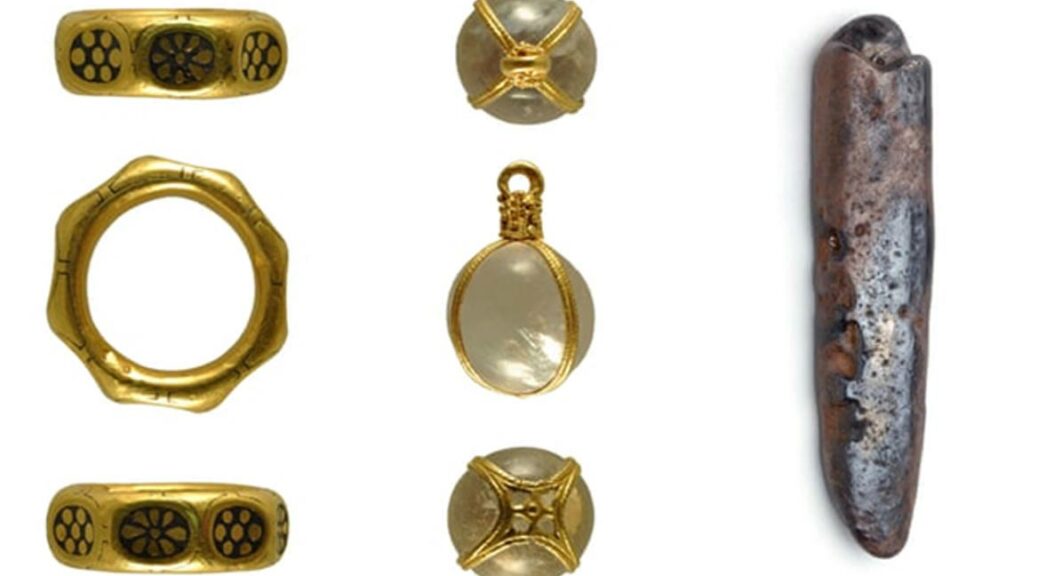Rogue Metal Detectorists Stole $3.6 Million Treasure
During the years, metal detectorists make numerous remarkable finds in Britain, with a large crowd of 2,600 coins discovered a few months ago.
Yet archeological discoveries by detectorists are subject to stringent rules. Currently, four people are being held guilty of conspiring to disguise and illegally sell a treasure with metal detectors by the British courts.
Two metal detectorists have been jailed for stealing the “emblematic” Viking-era Leominster Hoard of coins and priceless jewellery worth up to £12 million – much of which is still missing.
George Powell, 38, and Layton Davies, 51, failed to declare an “invaluable” collection of buried treasure dating back 1,100 years to the birth of a united English kingdom, during the time of Alfred the Great.
The items, many of which were Anglo Saxon but are typical of a Viking burial hoard, were dug up on Herefordshire farmland on June 2, 2015.

It is thought the trove was buried by someone within the Great Viking Army in either 878 or 879, which by then was being forced back east by an alliance of Saxon forces.
Powell, who was described as having the “leading” role, was jailed for 10 years while caretaker Davies received eight-and-a-half years.

Both were also convicted alongside two other men, 60-year-old Paul Wells and Simon Wicks, 57, with conspiring to conceal the find. Sentencing at Worcester Crown Court on Friday, Judge Nicholas Cartwright said they had “cheated” not only the landowner but the public of “exceptionally rare and significant” coins.
He said: “90% of the coins or thereabouts remain hidden to this day.
“All four defendants played their respective parts.
“You, Simon Wicks, were part of a conspiracy to conceal the stolen treasure and to sell it.
“Paul Wells, who will be sentenced an on a future occasion, was part of a conspiracy to conceal part of the stolen treasure.”
He added: “The irony in this case is if you, George Powell, and you, Layton Davies, had obtained the permissions and agreements which responsible metal detectorists are advised to obtain, if you had gone on to act within the law after you found this treasure, you could have expected to have either a half share, or at very worst a third share of over £3 million to share between the two of you.
“But you wanted more.”
Among the priceless hoard was a ninth-century gold ring, a dragon’s head bracelet, a silver ingot, a crystal rock pendant dating to the fifth century and up to 300 coins, some dating to the reign of King Alfred.

Only 31 of the coins have been recovered, although mobile phone photographs on Davies’s phone – later deleted, but recovered by police – showed the larger hoard, still intact, in a freshly dug hole.

Five of the coins are examples of the exceptionally rare Two Emperors penny, valued at up to £50,000 apiece, and so-called as they depict King Alfred and a lesser-known monarch, Ceolwulf II, who reigned in the old kingdom of Mercia, sitting together.
Expert analysis of all the jewellery and coinage recovered to date and now held at the British Museum returned a valuation of at least £581,000.
Wicks, Powell, and Davies were also found guilty of converting their ill-gotten gains into cash, after police traced several coins that had been sold on to private collectors, hidden away or left with expert valuers.
Powell, of Kirby Lane, Newport; Davies, of Cardiff Road, Pontypridd; Wells, of Newport Road, Cardiff, and Wicks, of Hawks Road, Hailsham, East Sussex, were also convicted after trial of ignoring the law stating such finds must be properly declared.
